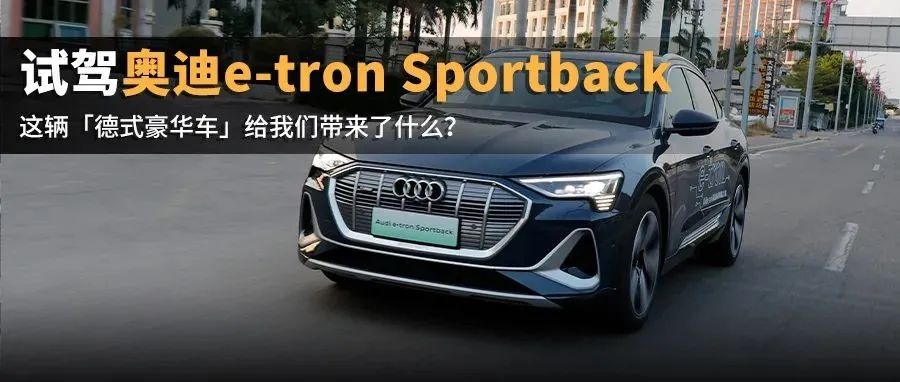Audi e-tron Sportback: A Comprehensive Luxury Experience in the Era of Electrification
Last week, taking advantage of the Audi e-tron family’s pure electric driving tour in Shenzhen, we once again drove the flagship mid-size SUV of Audi – e-tron. Although we had previously test-driven the Audi e-tron and did a comprehensive test drive report. Details: “Audi e-tron: A Comprehensive Luxury Experience in the Era of Electrification”.
However, the previous one was already a domestically produced Audi e-tron, and this time we test drove the hatchback version of the derivative model – the Audi e-tron Sportback, which is the imported version of the current e-tron model. Although they are generally consistent, there are differences in the body structure and some details.
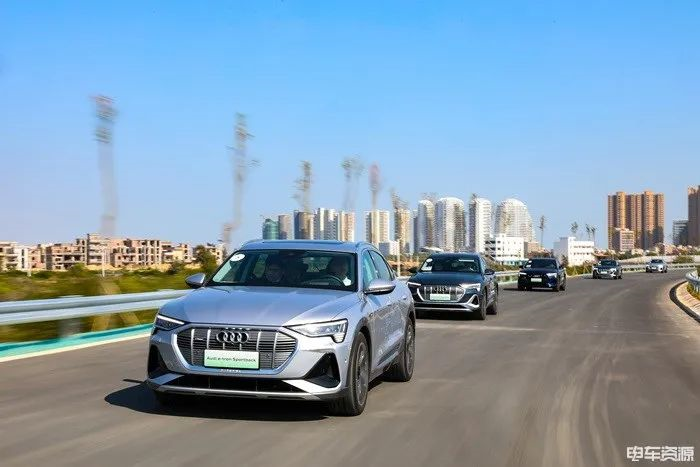
Quick Comparison Between Domestic and Imported e-tron
-
There are three domestic e-tron models, with prices ranging from 546,800 to 648,800 yuan after subsidies; there are two imported e-tron models in the domestic market, with prices ranging from 669,800 to 729,800 yuan after subsidies.
-
The domestic e-tron is a traditional mid-size SUV, while the imported e-tron is a hatchback SUV.
-
The length, width, and height of the domestic e-tron are 4901/1935/1640, and the wheelbase is 2928; the length, width, and height of the imported e-tron are 4902/1935/1618, and the wheelbase is also 2928.
-
The front headlights of the domestic e-tron are equipped with ordinary matrix LED lights, while the imported e-tron has digital matrix LED lights that can project multiple patterns.
A “Fuel Car” with Continuation of Range
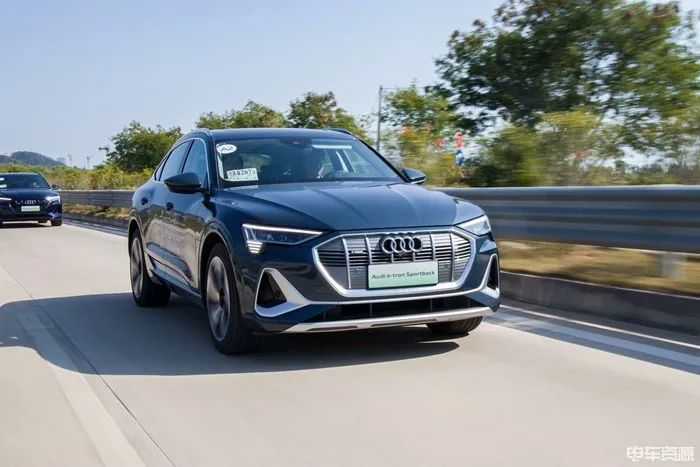
Regarding power, in fact, there are almost no significant differences between the Audi e-tron Sportback and the domestically produced e-tron. They are both based on the longitudinally positioned modular platform MLP, which also includes models such as the Audi Q8 and the Lamborghini Urus. All three models of the Audi e-tron Sportback use a front + rear dual-motor layout, with maximum power of 135 kW and 165 kW respectively, and peak torque of 664 N·m. They are equipped with a 2-speed automatic transmission.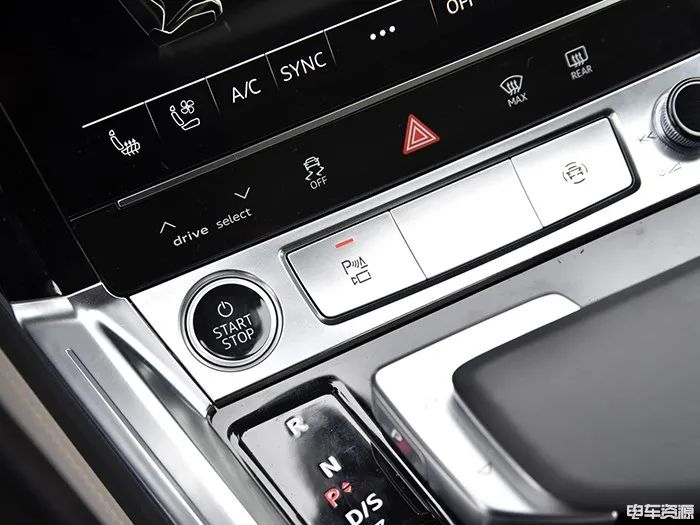
The first thing to do after getting on the car is to open the driving mode selection. In addition to selecting driving mode through the vehicle settings on the central control screen, there is also a shortcut physical button near the folding area below the central control screen that can adjust the driving mode. After opening it, Audi e-tron sportback offers a variety of different driving modes including Comfort, Auto, Dynamic, Individual, and All-Terrain.
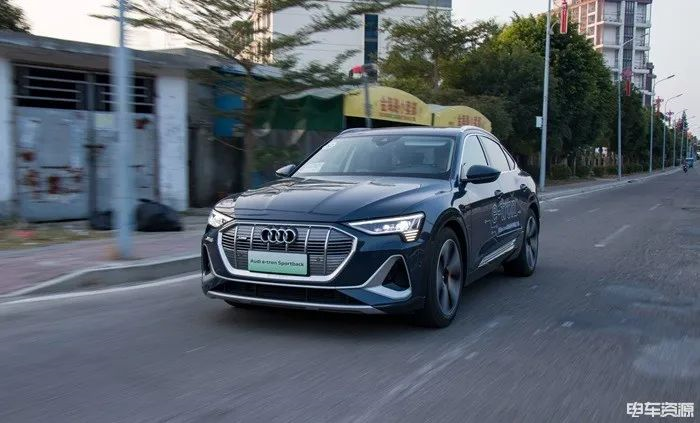
With the powerful torque output characteristics of the electric motor and the dual support of e-quattro electric four-wheel drive, even if the driving mode is adjusted to Dynamic, or the most sporty Individual setting, the accelerator pedal of Audi e-tron sportback still presents a very linear speed, without giving a sudden sense of speed when giving a little throttle. Instead, based on Audi’s consistent stable driving experience, it gives a smoother and more comfortable feeling.
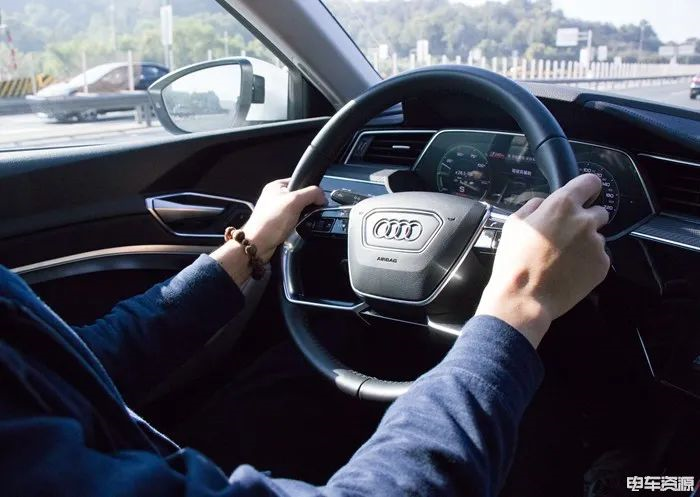
In terms of steering, Audi e-tron sportback’s steering wheel has moderate accuracy and feedback, presenting a relaxed and comfortable driving feeling. The steering force does not change much under different driving modes, and only the Sport mode will be slightly heavier.
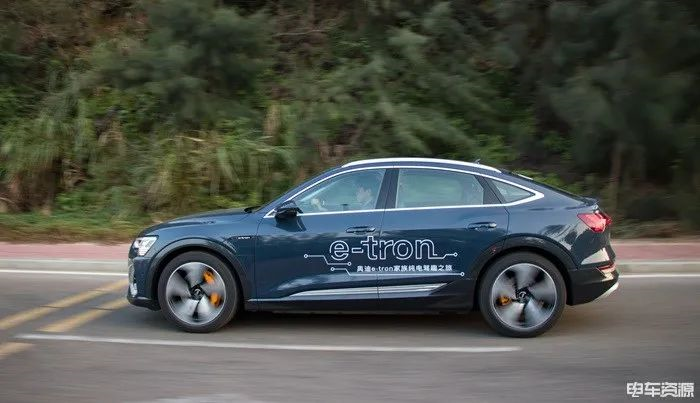
The suspension of Q8 also changes with different driving modes. In addition to the front and rear multi-link independent suspension, it also has an adaptive air suspension unique to the same level. Through the adaptive chassis adjustment system, it can choose between the comfortable and sporty chassis according to the driving mode and road conditions, thereby providing the best body height and degree of suspension damping hardness.
Therefore, Audi e-tron sportback can give both the driver and passengers a very comfortable riding experience. When facing speed bumps and manhole covers on the road, its close to five meters long body will not produce any sense of rocking, but filter them very crisply. Especially when the vehicle is driven on the highway, it gives people a feeling of both sedan and SUV.
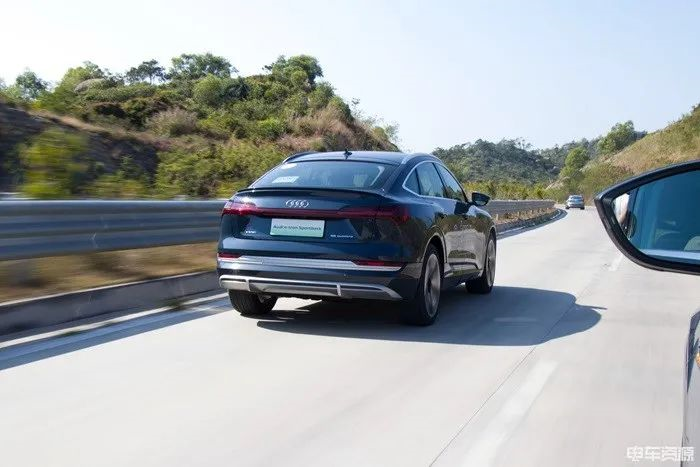 # Electric energy recovery is essential for electric vehicles as well. The Audi e-tron sportback adopts two forms of energy recovery. The first one is the automatic mode which provides a driving feeling closer to that of a fuel-powered car, and hardly noticeable when decelerating.
# Electric energy recovery is essential for electric vehicles as well. The Audi e-tron sportback adopts two forms of energy recovery. The first one is the automatic mode which provides a driving feeling closer to that of a fuel-powered car, and hardly noticeable when decelerating.
The second mode is the manual adjustment, which is implemented by the energy recovery paddle shift behind the steering wheel, providing three levels of energy recovery. However, the intensity of the energy recovery for each level is not too aggressive. Even at the highest level, one cannot experience an instant and strong drag feeling by merely lifting the foot.
However, due to the self-weight of the Audi e-tron sportback reaching 2.6 tons, it tends to show nose-up and nose-down situations, especially when starting or stopping, and even a nodding feeling when the vehicle speed reaches its minimum during braking. Therefore, the massive weight brings considerable pressure to the braking system. Fortunately, the e-tron sportback is equipped with 6-piston brake calipers, providing excellent braking performance.
Overall, perhaps it’s Audi engineers’ inertia for tweaking the driving of traditional fuel-powered cars, or maybe it’s Audi’s habitual continuation of maintaining customers for its brand. But whichever explanation is suitable, this pure electric e-tron sportback provides us with a driving experience that is almost the same as that of fuel-powered cars.
Review of the Static Part
The front face of the Audi e-tron Sportback adopts the classic Audi SUV family style “Octagon” design, with the frame and interior decoration using matte silver as a highlight. However, the center part is left for the air intake function after a large area of sealing.
The design of the lamp compartment remains consistent with the domestic e-tron, and the four-bar daytime running light design has a high recognition. Unlike the domestic e-tron, the Audi e-tron Sportback is equipped with digital matrix LED headlights that can project different patterns and even customize projections.
A hollow design is made at the bottom of the traditional fog light to improve airflow dynamics, reduce wind resistance, and improve the vehicle’s endurance. Moreover, the vehicle is also equipped with an S-Line sports appearance kit as standard.
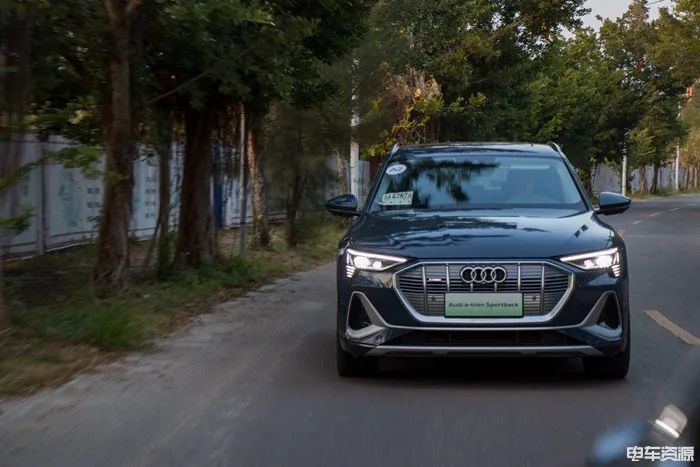
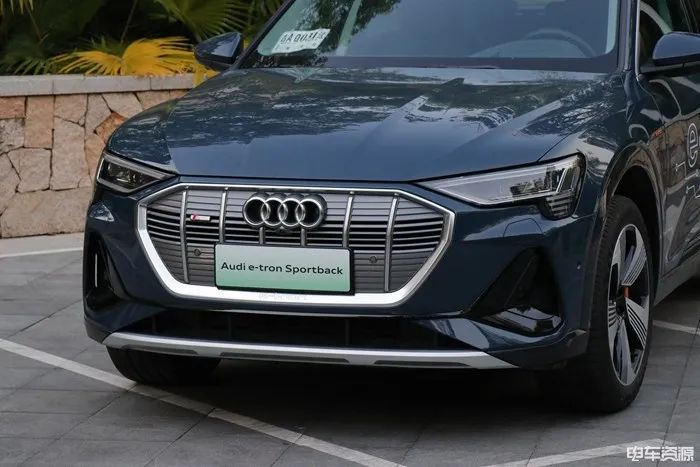
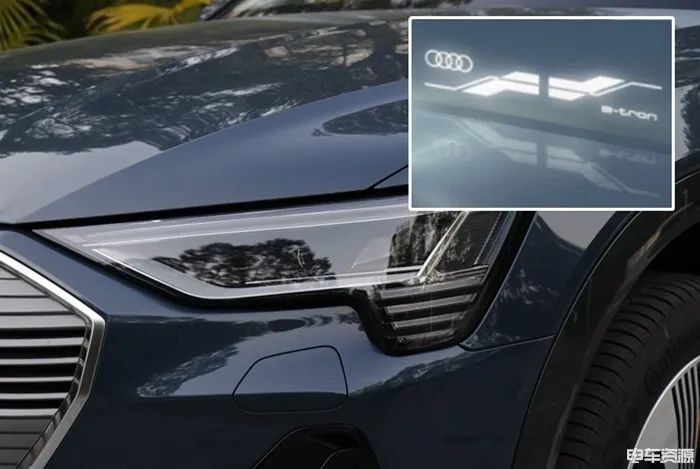
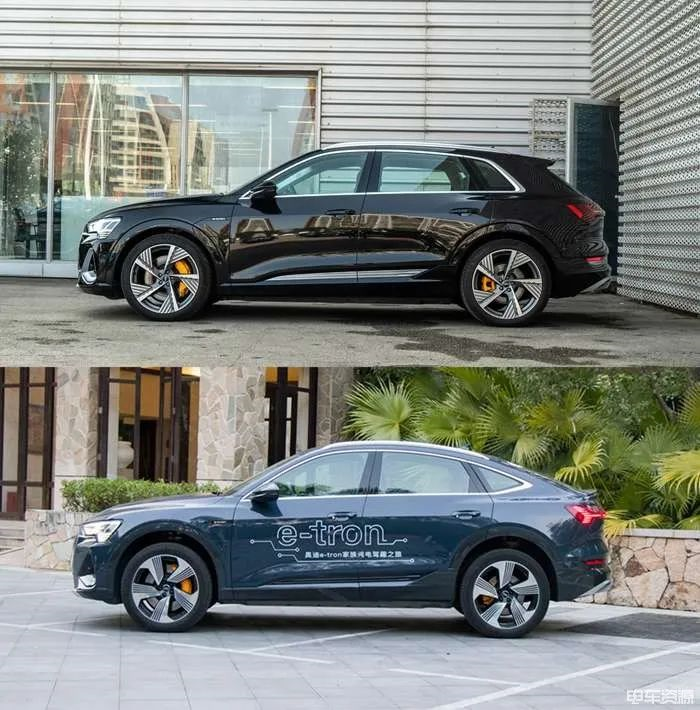 On the side of the car body, the Audi e-tron Sportback features an obvious downward design starting from the B-pillar, which is the biggest difference from the domestic e-tron. The waistline below the side mirrors runs through the front and rear door handles, giving a strong sense of power.
On the side of the car body, the Audi e-tron Sportback features an obvious downward design starting from the B-pillar, which is the biggest difference from the domestic e-tron. The waistline below the side mirrors runs through the front and rear door handles, giving a strong sense of power.
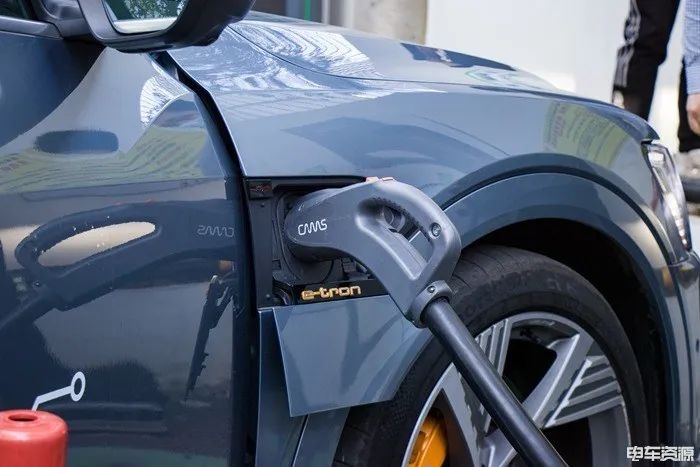
On both sides of the front fenders of the Audi e-tron Sportback, there are e-tron logos, not only showcasing its identity but also serving as design for fast/slow charging ports. The fast charging port can be charged from 5% to 80% in about 40 minutes.
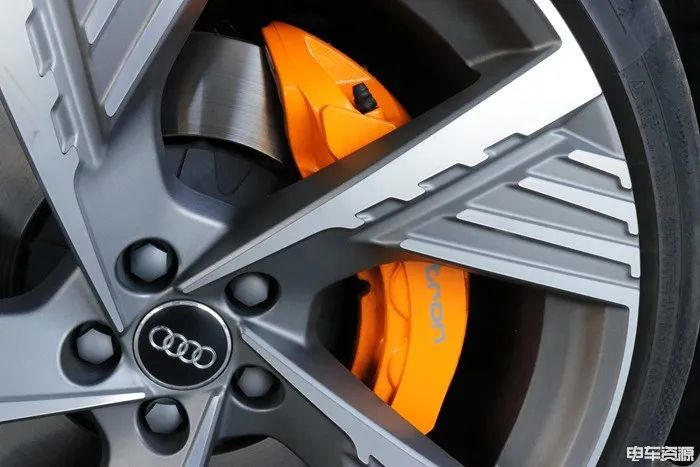
The five-blade knife-shaped wheel rim design is unique to Audi e-tron products, and the internal orange six-piston brake caliper design is very sporty.
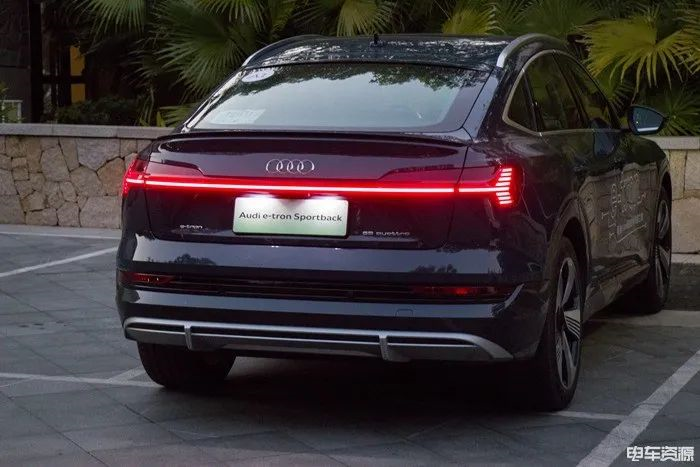
At the rear of the car, the Audi e-tron Sportback has a strong sense of mass, and the through-type taillights are also present. The taillight housing on both sides also adopts the same design as the domestic e-tron. The upturned little ducktail design with the silver diffuser shape below is even more sporty than the domestic e-tron.
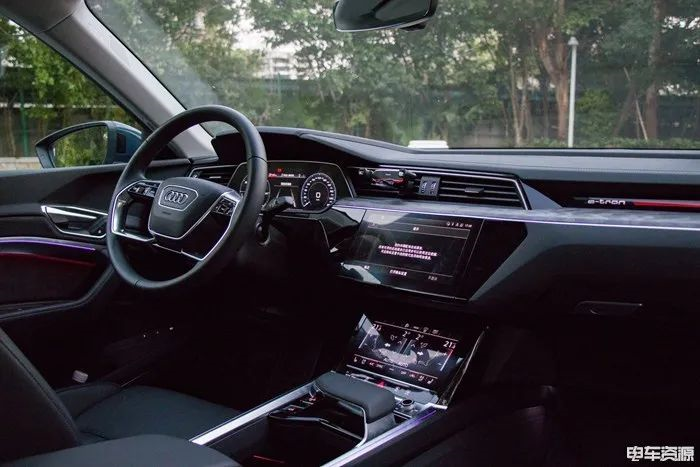
In terms of interior design, the Audi e-tron Sportback highly restores the overall layout of the domestic e-tron, with a 12.3-inch full LCD instrument panel, a 10.1-inch multimedia control screen + an 8.6-inch air conditioning and comfort system control screen, all almost the same. It oozes technology.
Although the three screens may not have as many innovative designs as many new force brands currently on the market, the linear motor vibration feeling when pressing the entire screen is indeed the most comparable to a real physical button. Although it is a touch operation, the feeling of the hands-on experience can really compare to a real touch screen while also preventing some blind operations during driving.
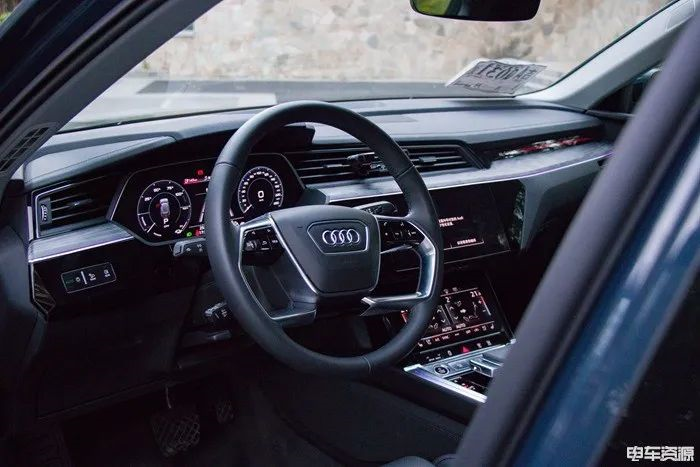
The Audi e-tron Sportback adopts a four-spoke steering wheel design, with a comfortable grip, and also adds multifunctional buttons on both sides, making it convenient for drivers to perform some quick operations while driving.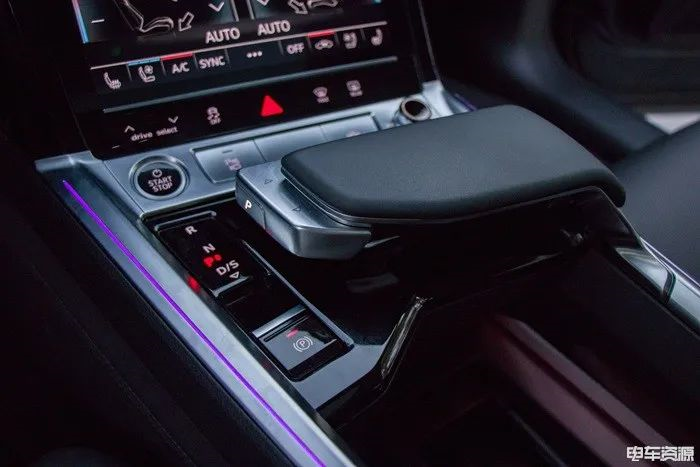
The design of the yacht-style electronic shifter beneath the center console not only adds a touch of luxury to the entire interior, but also appears to require the whole gear lever to be moved, whereas in reality, shifting can be accomplished with just the silver block below it. It only takes the cooperation of the index finger and thumb to shift gears, which is a rather creative design.
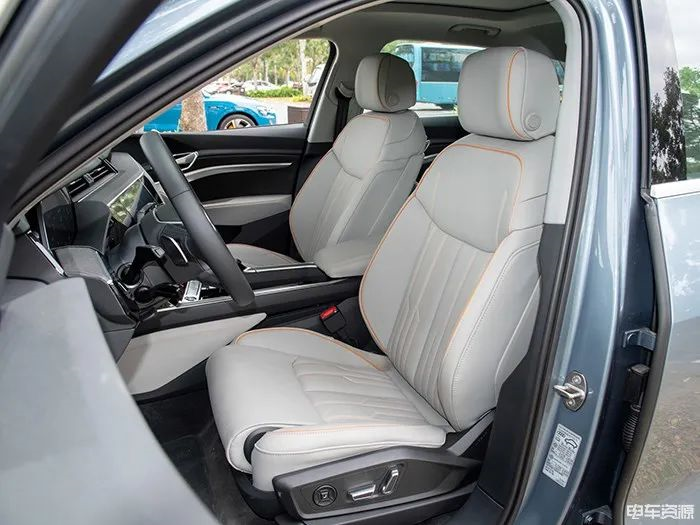
The one-piece seat with orange stitching portrays luxury and comfort to the extreme, with a good wrap on both sides. In addition to that, it is equipped with many comfortable features to relieve fatigue from long-distance driving. Both the driver and passenger seats have memory function, and the lumbar support can be electrically adjusted.
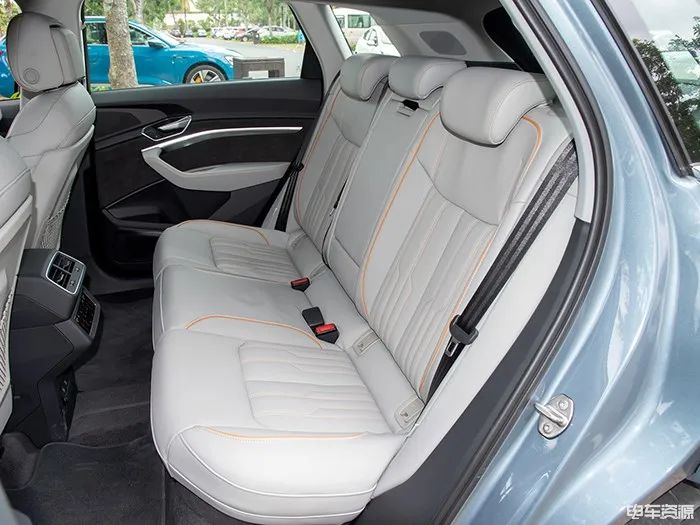
Moving to the backseat, the central LCD screen has air conditioning controls that can be adjusted separately for the left and right sides, with the ability to control temperature and airflow, and also has seat heating function. In addition, there is a reminder for the rear seat belt. The only drawback is that the cup holder on the middle armrest of the backseat is a bit shallow, and a bottle of mineral water cannot be kept very steady.
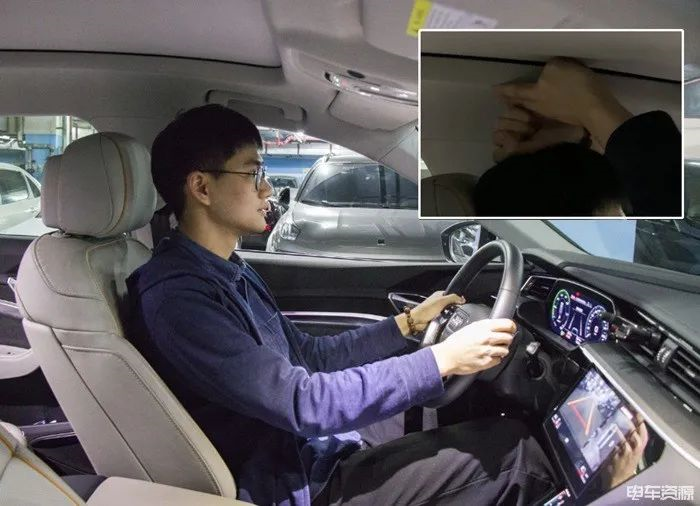
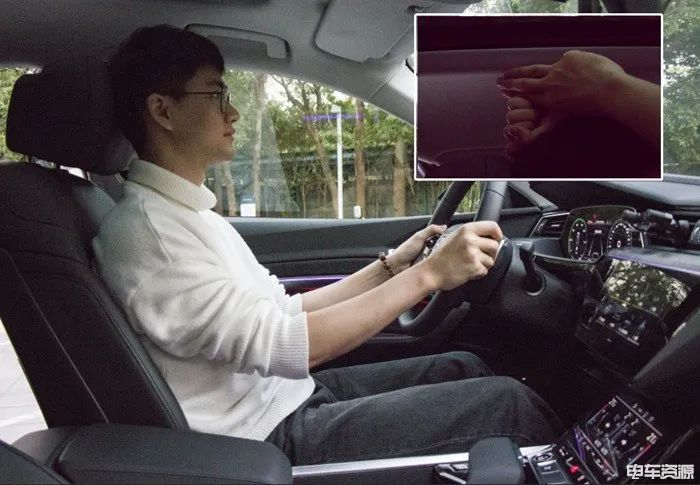
As for the space performance, we have compared the Chinese-made e-tron and the imported e-tron separately. Adjusting both front seats to the lowest position suitable for driving, testers with a height of 178cm have a headroom of one fist and two fingers, with no significant difference in the front space performance.
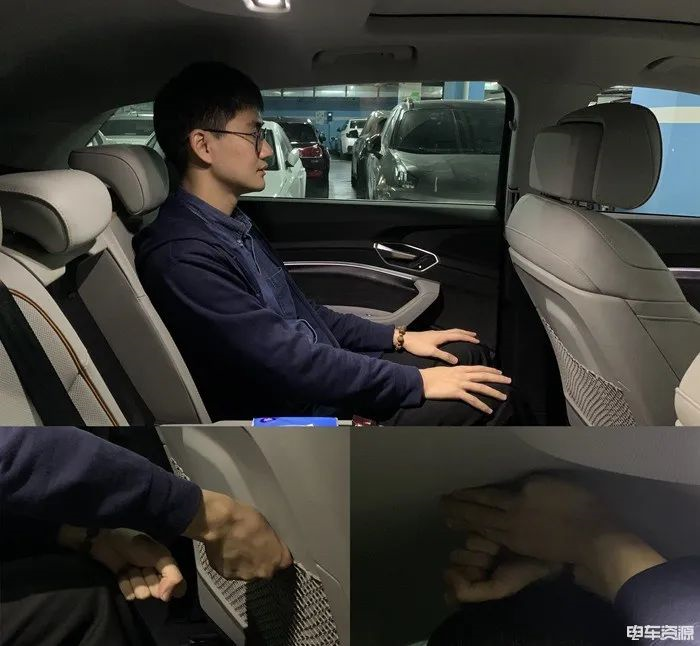
 Benefiting from the close to three-meter wheelbase, the legroom in the back of both cars is very spacious when the front seats remain still. However, in terms of headroom, due to the Audi e-tron Sportback’s coupé-like design at the rear of the vehicle, the headspace is reduced by about one fist and one finger compared to the domestic e-tron.
Benefiting from the close to three-meter wheelbase, the legroom in the back of both cars is very spacious when the front seats remain still. However, in terms of headroom, due to the Audi e-tron Sportback’s coupé-like design at the rear of the vehicle, the headspace is reduced by about one fist and one finger compared to the domestic e-tron.
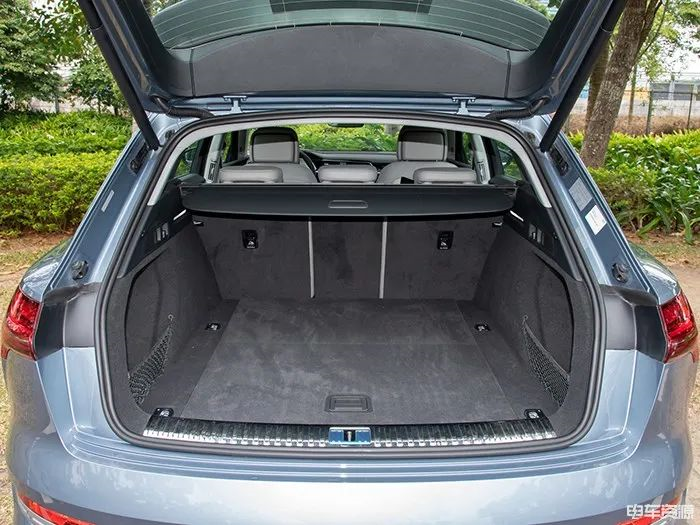
The volume below the luggage compartment storage curtain is completely the same as the domestic e-tron, while the top area is slightly smaller due to the coupe design, which has little effect on daily use. In terms of data, the regular volume of the luggage compartment is 615L, which already exceeds most other models, so there is no need to worry about the under-pressed space caused by the coupe design.
Conclusion
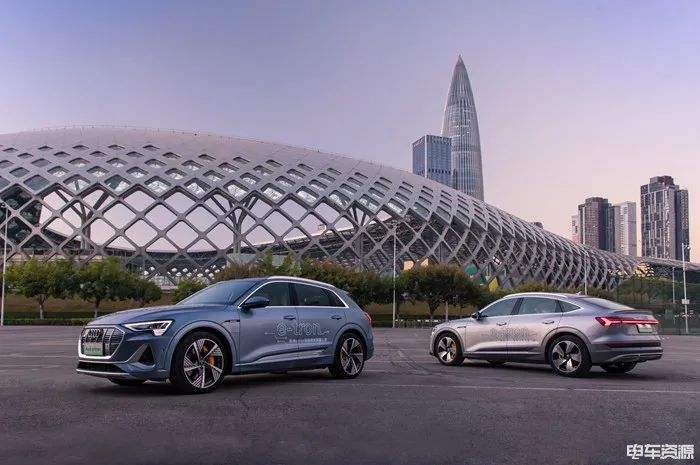
Overall, whether it is the imported Audi e-tron Sportback or the domestic Audi e-tron, they are both good-looking, unique, and practical pure electric vehicle models. Their existence further proves that “fresh experience” is not only related to the new forces of car manufacturing. When traditional brands take it seriously, they can also bring products that exceed expectations.
Of course, we also know that the performance of the Audi e-tron in the domestic market at this stage is not very satisfactory. But with Audi’s “all-in e-tron” product strategy layout and the launch of up to 5 pure electric vehicle models next year, Audi’s pace in the electrification from 0 to 1 will be even faster.
Although it is difficult, we still shine brightly.
This article is a translation by ChatGPT of a Chinese report from 42HOW. If you have any questions about it, please email bd@42how.com.
